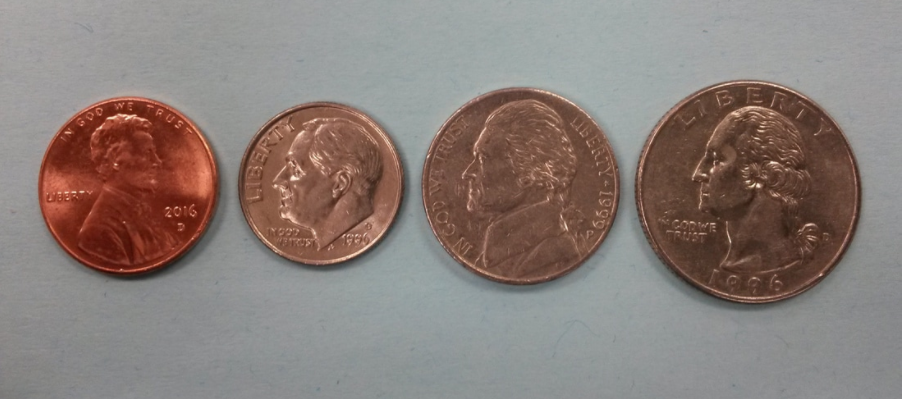Identify common features among a group of items and create a cladogram to learn how scientists use a method called cladistics to group animals and determine evolutionary relationships.
Materials
A penny, nickel, dime and quarter for each pair of students
Engage
Write lion, elephant, zebra, kangaroo, koala, buffalo, raccoon and alligator on the board. Ask students how the animals are related and what might be a good way of grouping them into sets and subsets.
Scientists use a method called cladistics to group animals and determine evolutionary relationships. They look for unique features, such as a hole in the hip socket, that the animals share. Animals with the same features are grouped together. A chart called a cladogram shows these relationships and can show how animals are linked to one another through a long and complex history of evolutionary changes.
Today students will practice using cladistics by examining the features of various coins.
Explore
- Working in pairs, students will examine the features of various coins to determine how they are related. Remind students that cladistics is used to determine relationships among organisms, and not necessarily objects. This exercise will introduce them to how cladistics works.
- Distribute the Coin Cladogram Worksheet to students.
Explain
- Ask students to explain how they arrived at their conclusions.
- Note any differences among the cladograms.
- The first feature (round) has been identified for students. Possible other features are: silver-colored, ribs on the edges, president’s head, etc.
- What is important to note is that a coin at any node must have the features of all previous nodes.
Extend and Evaluate
Distribute illustrations of six to eight prehistoric animals. Ask students to classify the animals according to features they identify. Have groups share their findings.